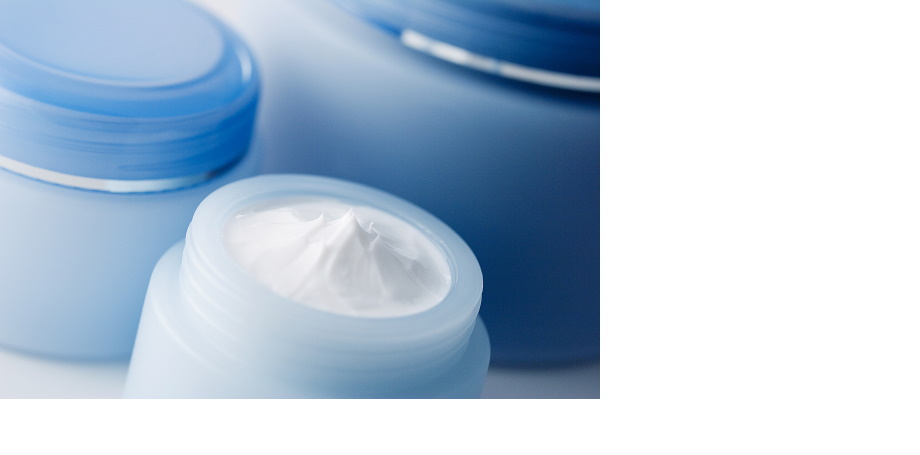Less is more – how much do we need?
9
Apr

Recently, a trend towards simplicity has appeared in the cosmetics industry. This movement towards minimalism is reminiscent of developments in the mobile phone industry.
In August 1996, Nokia introduced the first smartphone onto the market, the Nokia 9000 Communicator. This phone had access to the Internet, including a web browser, and could send and receive emails and faxes. The device was very expensive and bulky, even by those days’ standards. By the beginning of the 2000s, there were more smartphones being sold, including the pioneering BlackBerry.
All had in common that they were designed for email and the Internet – and had lots of keys. Then, in 2007, the first iPhone was unveiled.
“Simplicity isn’t just a visual style. It’s not just minimalism or the absence of clutter. It involves digging through the depth of the complexity. […] You have to deeply understand the essence of a product in order to be able to get rid of the parts that are not essential.” |
Designed with a large touchscreen, it did away with all buttons except one – the central control element on the front of the phone. Its operation was simple and intuitive, making it a hit among the mass of mainstream consumers. The original pioneers like Nokia and BlackBerry had no response to this. Their fate is well known.
The simplistic design by the Californian technology company became the standard for all smartphones.
Is this change repeating itself in cosmetics?
In the past, people used to use simple cosmetic products or household remedies to care for their skin. Over time, the composition of cosmetic products became increasingly complex. Because consumers could not always perceive the long-term effects, an immediate effect became one of the more important selling points for a product’s success. A care product had to smell good, feel good, sink in rapidly, and have a long shelf life. This had the result of more and more – sometimes questionable – additives being included, which themselves provide no direct benefit to the skin.
Thus, we now find products with labels sometimes listing more than 80 declarable ingredients. If one’s daily care routine includes not only skin creams, but also serums, makeup and cleansers (often containing between 20 and 30 substances each), the skin comes into contact with an overabundance of ingredients. A multi-layering routine can easily add up to more than a hundred different substances. This bombardment through all kinds of applications is excessive and the skin cleansing eventually becomes too severe to be called care.
The skin’s natural barrier, in the form of a protective mantel, is supposed to defend against environmental impact and dehydration, but can ultimately be weakened. When this happens, the skin becomes sensitive and prone to irritation, and can even develop allergies and eczema.

The trend towards simplicity
In cosmetics, like in phone technology, less is often more.
A recent simplicity trend has been gaining popularity, and the ingredients in cosmetics are now going the way of buttons on smartphones.
It started with claims of what the product does NOT contain, for example silicones and parabens in creams or aluminium salts in deodorants. Many people these days want simple, honest products.
Consumers have become warier than ever, and are increasingly testing ingredients with the help of specialized apps and portals on the Internet.
| “The time when people believed everything that brands promised is over. Today, people want transparency.” Marion Thürig, Marketing Director Switzerland of Vichy, La Roche-Posay and Roger & Gallet of the beauty giant L’Oréal |
Reducing care products to the essential plays an important role in this respect and sways the purchase decision. Yet, this does not mean that using fewer ingredients is the only important factor in a product’s success; the right choice of substances is equally important. Only with the right ingredients can the consumer’s skin recover and regenerate its natural protective barrier.
Simplification therefore often goes hand-in-hand with the use of natural substances such as plant extracts or essential oils.
It is mainly, but not exclusively, small start-up companies who have wholly embraced the sparing use of raw materials as their business model. Their focus is on conveying a certain attitude towards life, largely through a captivating online presence and marketing on platforms such as Instagram, without the use of professional models. Honest and relatable pictures are used. Designs are kept simple and clear to reflect the simple logic of the product inside on the packaging outside.
Most of their product lines include only a few types. This is another reason why big companies tend to shy away from simplicity – there is less money to be made with it than with large, all-inclusive product lines.
The trend has given rise to many products intended to be used sparingly and not even on a daily basis. This makes it all the more important to focus on promoting personal wellbeing. Smaller companies have more freedom in this respect to offer associated products that support the application of cosmetics – for example towels, brushes, and sometimes wellness-related articles.
So you care not only for your body but also for your mind.
Future prospects
Given that the strongly selling (store) brands have yet to embrace the “less is more” concept, we should not expect to see a complete changeover to simplistic cosmetics very soon. What we can expect to see, however, is small batches being released as isolated cases that will gradually increase awareness of the concept and thus expand the consumer base.
Another form of simplicity in cosmetics is “Clean Beauty”. Again, care is taken in the selection of ingredients, but the focus here is more on the naturalness of the raw materials and on environmental protection. We will post more about Clean Beauty for you to read in the blog soon.
Sources:
- www.tagesspiegel.de/wirtschaft/10-jahre-iphone-das-erste-smartphone-war-ein-nokia/19221898.html, accessed on 09.01.2020
- www.maclife.de/news/klar-einfach-apple-minimalismus-zukunft-gestaltet-10097805.html, accessed on 07.01.2020
- fiveskincare.de/blogs/tipps/30-20-oder-nur-5-wie-viele-inhaltsstoffe-braucht-kosmetik-heute, accessed on 07.01.2020
- bellevue.nzz.ch/mode-beauty/minimalistische-beauty-einfach-schoen-ld.1320559, accessed onam 07.01.2020
- www.harpersbazaar.de/beauty/hautpflege-wenig-inhaltsstoffe, aaccessed on 09.01.2020
- www.faz.net/aktuell/stil/leib-seele/minimalist-beauty-der-trend-geht-zu-weniger-hautcreme-14620307.html, accessed on 08.01.2020


Comments are disabled for this post.